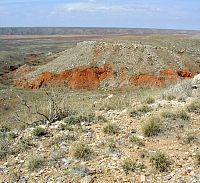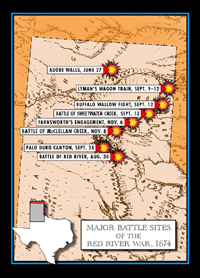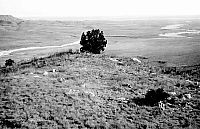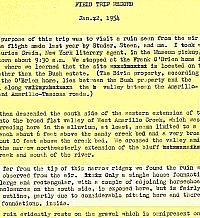Explorers, Excavators, and Promoters: A History of Plains Villager Research In the Texas Panhandle
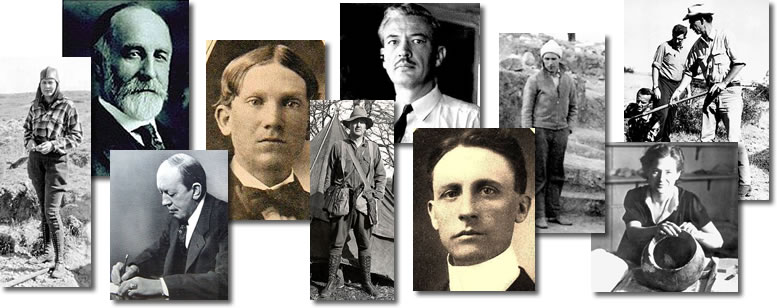
The conspicuous ruins left behind by Plains villagers in the Texas Panhandle have captured the eyes and the imaginations of those who have visited or lived in the area. This exhibit reviews the history of archeological research on and exploration of Plains Village sites of the Texas Panhandle. This introduction is followed by these six sections:
The reader can follow the history of research from
start to finish simply by clicking on the The best-known Plains Village tradition in the Texas Panhandle is the Antelope Creek culture, which began about A.D. 1100-1200. Archeological clues show that the Apache groups who moved into the region about the time the villagers left (A.D. 1450-1500) sometimes camped at abandoned villages. For the next four centuries the region was temporary home to a colorful and often bloody succession of human groups including nomadic hunting peoples, mounted Plains Indian warrior societies, ciboleros (Mexican buffalo hunters), Comancheros (Mexican traders), pastores (Mexican sheepherders) Anglo hide hunters, and the U.S. Army, culminating in the Red River War of 1874. Within two decades the Texas Panhandle was “permanently” settled again, this time by Anglo ranchers and farmers. Like the Plains villagers centuries earlier, these newcomers settled into the valleys of the Canadian River and its tributaries and other major streams such as Wolf Creek where water, wood, and resources were concentrated. White settlers encountered the curious stone ruins that abounded in the region and wondered who was responsible for them. Old buffalo hunters had no idea, nor did the elders of several Plains Indian tribes who became familiar with the region in historic times. An Arapaho chief named Spotted Wolf is said to have declared the ruins at Wolf Creek known today as Buried City to be older than living memory and not even the work of Indians. The ruined Plains villages of the Texas Panhandle had been lost to history. The first recorded observations of archeological remains in the Texas Panhandle were made by United States Army officers in the mid to late 1800s during military survey expeditions. In 1845, Lieutenant J. W. Abert visited and described the massive stone-tool quarries known today as the Alibates flint quarries. Abert recognized abundant evidence of tool making and called the area Agate Bluffs. He could not have known that for over 13,000 years prehistoric groups had been making use of the abundant and colorful stone found there or that Antelope Creek peoples built several large villages in the vicinity to take advantage of the useful and economically important resource. On May 25, 1876, Lt. Thomas M. Woodruff chanced upon an Antelope Creek house on a high hill overlooking the Canadian Valley and conducted what historian T. Lindsay Baker generously characterized as the "first conscious excavation" of an archeological site in the Panhandle. Woodruff spied a space about 12 feet square marked out by stones and thought it must be a grave. "After digging and scraping around with my sheath knife I found several arrowheads of flint." Almost 80 years later in late 1953, archeologists Jack Hughes and Floyd Studer spotted what they believed may have been the same locality in Potter County during an aerial reconnaissance. Hughes soon visited the site and identified it as the remains of a Panhandle aspect (Antelope Creek) slab house. Woodruff's spontaneous digging is the first known example of a pattern that continues to plague Panhandle archeology to this day. Virtually every conspicuous Antelope Creek site has been dug into repeatedly by casual curiosity seekers and determined looters alike, many of the latter wielding shovels and picks and causing great destruction. The lure of stone architecture seems to be irresistible, even in face of the fact that virtually nothing of significant commercial value is ever found in Antelope Creek sites. The treasures to be found are the small things forgotten—mainly broken fragments and household trash—that, when properly studied, can tell fascinating stories. |
